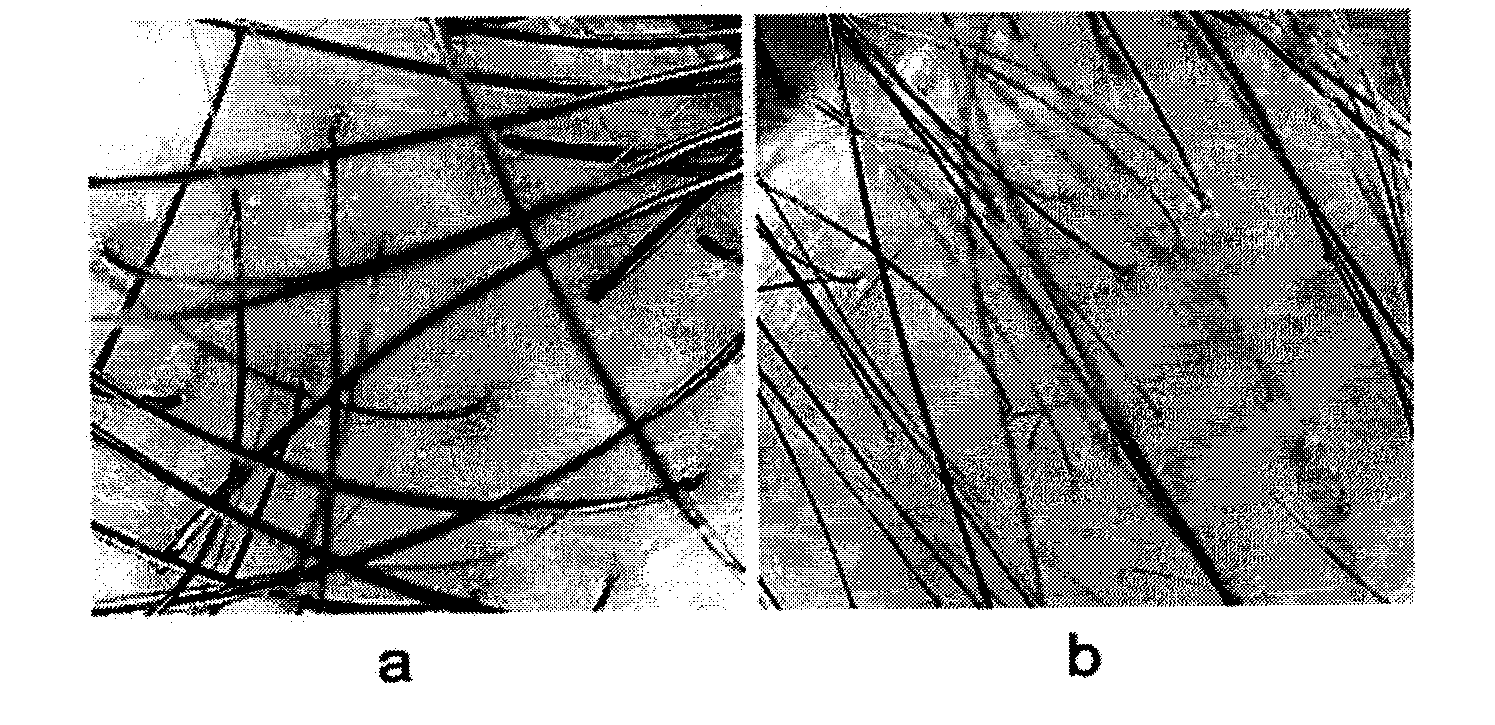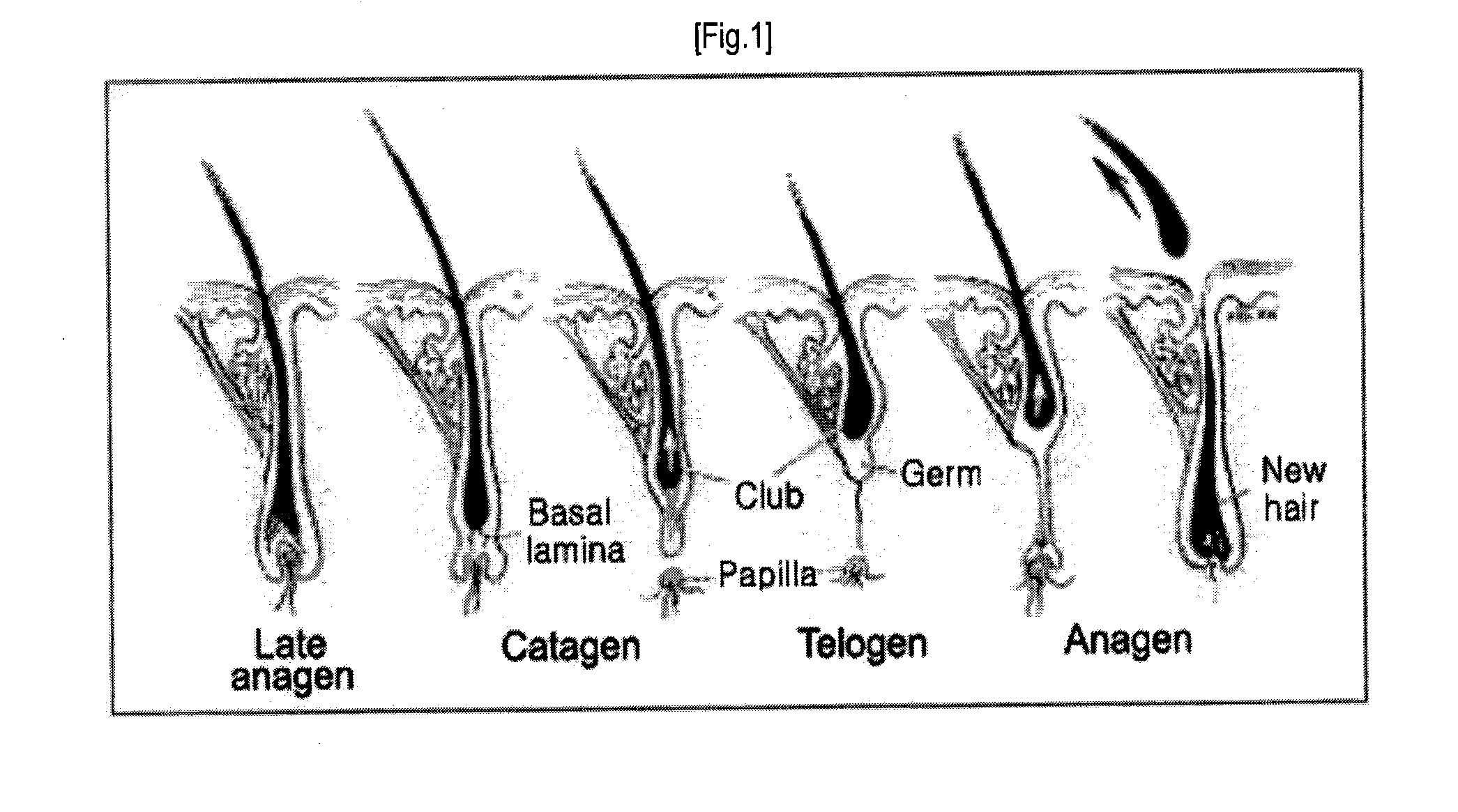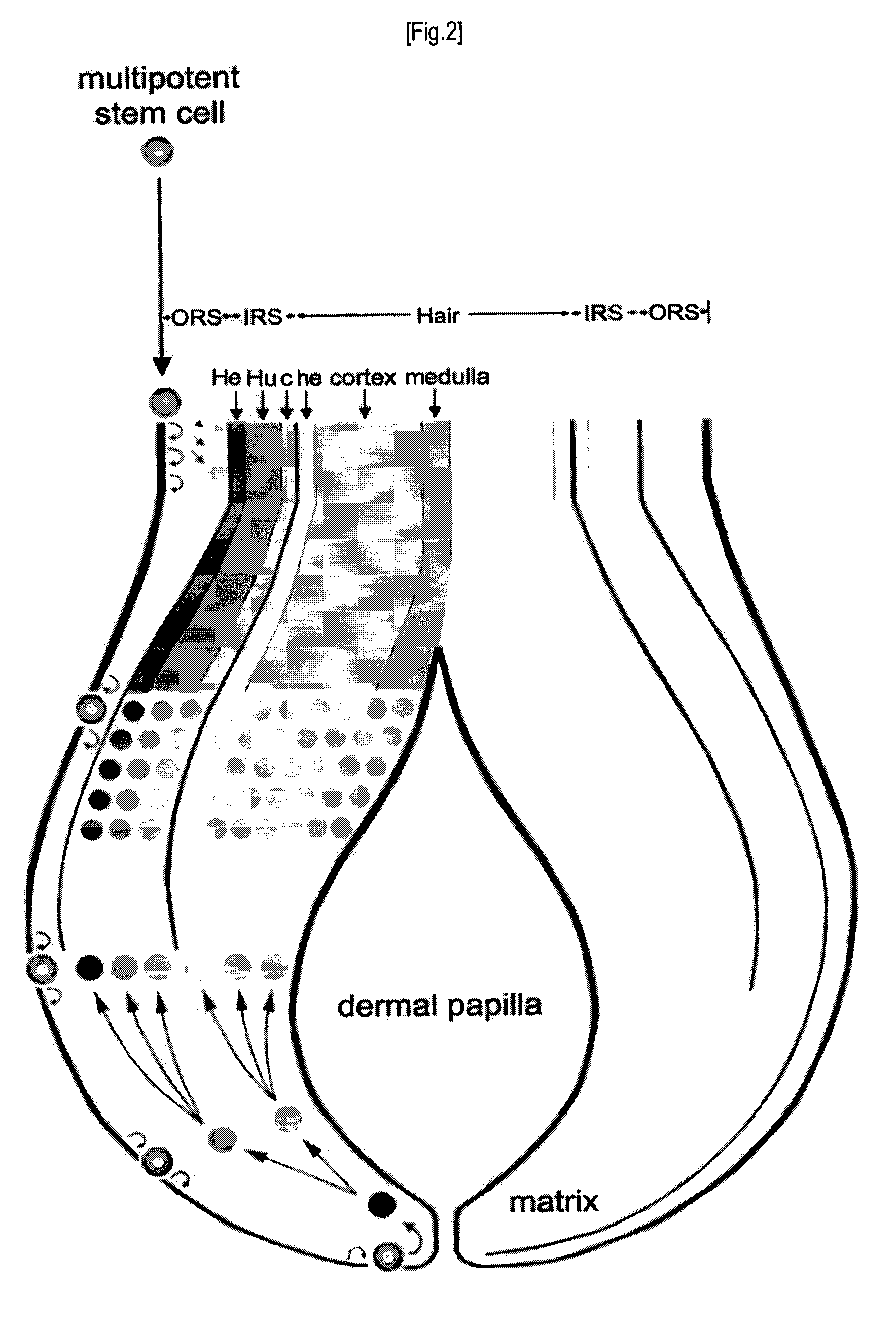Composition for Treating Baldness with Stem Cell Derived From Umbilical Cord Blood
a technology of stem cells and umbilical cord blood, applied in the field of baldness treatment, can solve the problems of no known method capable of completely reversing and essentially curing this condition, hair stem cells, no longer function, and no longer functioning of hair papilla
- Summary
- Abstract
- Description
- Claims
- Application Information
AI Technical Summary
Benefits of technology
Problems solved by technology
Method used
Image
Examples
example 1
Selection of Umbilical Cord Blood
[0035] After determining as to whether 6 Human Leukocyte Antigen (HLA) are identical with those of baldness patients, cryopreserved umbilical cord blood was selected in which 6 HLA were identical with those of patients or one or two HLA were not identical with those of patients.
[0036] The human leukocyte antigen (HLA) is an important factor determining acceptance or rejection of the engrafting of the injected cell, when foreign (non-self) cells other than autologous (self) cells are injected into the body. In order to determine histocompatibility between a donor and a recipient, HLA is subjected to examination of the total 6 antigens, each examination of which is based entirely on DNA analysis. Such DNA analysis of 6 antigens is to determine on whether the HLA class I (HLA-A, HLA-B) and class II (HLA-DR) loci are identical with those of a patient to be transplanted.
example 2
Isolation and Culture of Stem Cells from Umbilical Cord Blood
[0037] Umbilical cord blood units cryopreserved at −196° C. were placed and immediately thawed in a water bath at 37° C. In order to isolate monocytes from the umbilical cord blood, the umbilical cord blood was diluted with two-fold volume of αMEM (alpha-minimum essential medium, Jeil Biotech Services, Korea) and was centrifuged at 300×g for 10 minutes at room temperature. The separated buffy coat layer was collected, diluted again with two-fold volume of αMEM, overlapped on Ficoll-Hypaque and centrifuged at 300×g for 30 minutes at room temperature.
[0038] In isolating monocytes from blood, Ficoll-Hypaque, which is a polymer of Ficoll (sucrose polymer) and Hypaque (sodium ditrizoate), is largely used. Ficoll-Hypaque has a specific gravity of 1.077 g / ml, which is heavier than that of monocytes, but lighter than that of red blood cells, which makes it possible to separate the cells from each other by specific gravity differ...
example 3
Transplantation of Umbilical Cord Blood-Derived Stem Cells
[0042] Stem cells (5×107 cells), cultured for two weeks in Example 2, were placed in 2 mL of 0.05% trypsin-EDTA and were reacted at room temperature for 5 min. Then, 3 mL of αMEM was added thereto and the resulting mixture was transferred to a 15 mL test tube and centrifuged at 300×g for 10 min. After centrifugation, a supernatant was discarded and 15 mL of physiological saline (Choong-Wae Pharmaceutical Corporation, Seoul, Korea) was added to the remaining materials in a test tube and were centrifuged at 300×g for 10 min and a supernatant was discarded. This step was repeated thrice. The thus-obtained cells were resuspended in 6 mL of physiological saline, and 2 mL of suspended cells were subcutaneously transplanted into right / left and rear parts of the bald area anesthetized along hairless lines, respectively, using a 26 G syringe needle.
[0043] This transplantation method of umbilical cord blood-derived stem cells enables...
PUM
 Login to View More
Login to View More Abstract
Description
Claims
Application Information
 Login to View More
Login to View More - R&D
- Intellectual Property
- Life Sciences
- Materials
- Tech Scout
- Unparalleled Data Quality
- Higher Quality Content
- 60% Fewer Hallucinations
Browse by: Latest US Patents, China's latest patents, Technical Efficacy Thesaurus, Application Domain, Technology Topic, Popular Technical Reports.
© 2025 PatSnap. All rights reserved.Legal|Privacy policy|Modern Slavery Act Transparency Statement|Sitemap|About US| Contact US: help@patsnap.com



